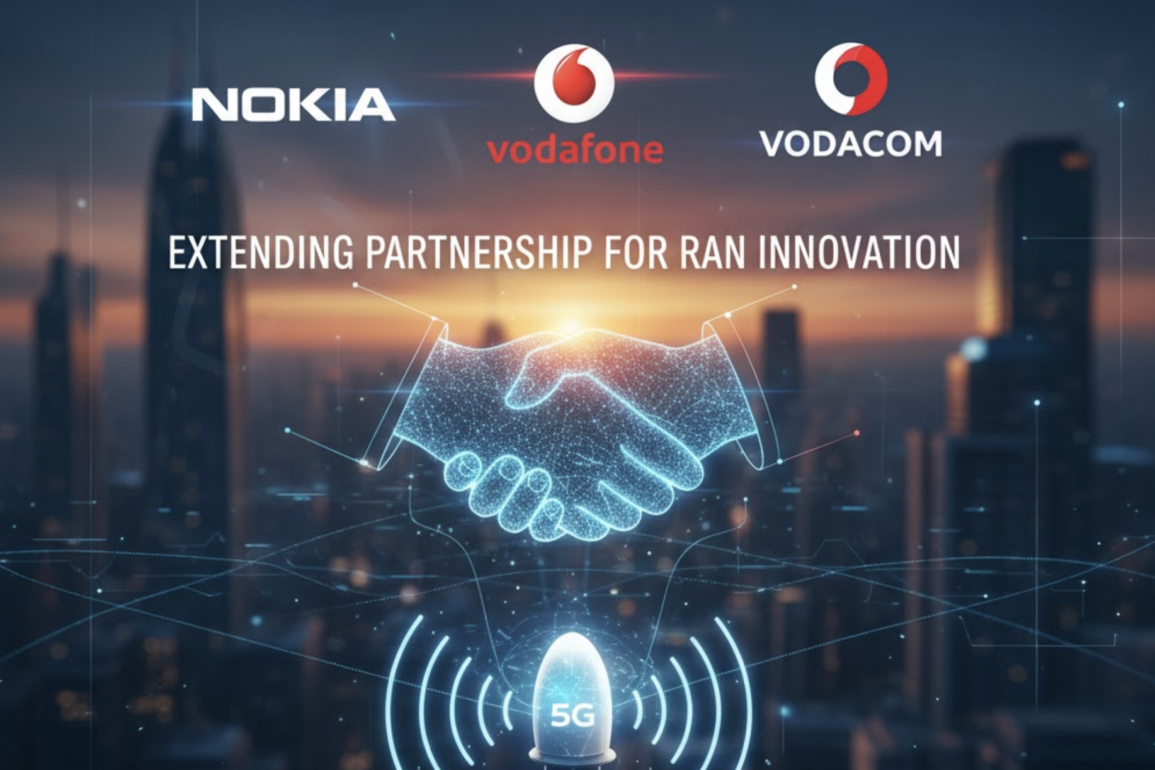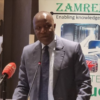When Nokia announced it was extending its partnership with Vodafone Group and Vodacom Group across Europe and Africa, the headlines read like a routine infrastructure update. But tucked inside the announcement was something more telling: a blueprint for how two telecom giants hope to reinvent the architecture of connectivity in a world that’s running out of patience for lag, latency, and energy waste.
The agreement, part of Vodafone’s five-year Radio Access Network (RAN) investment programme, cements Nokia’s role as a strategic partner across both continents. It comes just weeks after the company secured a piece of the £2 billion Vodafone-Three UK 5G infrastructure deal, billed as one of Europe’s largest privately funded telecom projects.
For Nokia, the dual commitment underscores its evolution from a handset pioneer to one of the world’s most sophisticated network builders. For Vodafone, it’s a bet that a multi-vendor, AI-driven network can keep its users connected—and regulators appeased—without compromising sustainability or speed.
“Today’s networks need new levels of performance, trust and resilience,” Mark Atkinson, Head of RAN at Nokia said in a press release. “We are delighted to extend our partnership with Vodafone, Vodacom, and its affiliates to build future-proof 5G standalone networks across Europe and Africa.”
Inside the Partnership
Under the new deal, Nokia will deploy equipment from its AirScale RAN portfolio—Massive MIMO radios, basebands, and remote radio heads powered by the company’s ReefShark System-on-Chip (SoC) technology. These components promise higher throughput with lower energy draw. The company will also roll out MantaRay NM, its AI-powered intelligent network management platform, which offers operators a single, consolidated view of network health for predictive maintenance and optimization.
Crucially, the partnership includes the first deployment of a 5G Dual-Band Massive MIMO Radio in Africa, marking a leap in capacity and coverage for Vodacom’s African operations. That’s no small feat in a continent where rural connectivity often lags decades behind urban centers.
Nokia says the deal will “boost the performance, efficiency, and reliability of the network … delivering a superior customer experience in combination with reduced space and energy requirements.”
In Africa, where grid stability and power costs remain chronic bottlenecks, that last claim may prove decisive.
Why Africa Matters in a Global 5G Story
While the technology headlines often focus on Europe, Africa has quietly become a proving ground for network innovation. Markets like Kenya, South Africa, and Ethiopia—where Vodafone and Vodacom already operate through subsidiaries such as Safaricom—are hungry for scalable, energy-light infrastructure.
The new deployment brings 5G capability to regions where even 4G coverage remains patchy. According to the GSMA’s 2024 Mobile Economy report, only 28 percent of mobile connections in sub-Saharan Africa were on 4G by the end of 2023, and just 4 percent on 5G. Yet mobile data traffic on the continent is projected to more than triple by 2030.
By introducing dual-band 5G radios that use spectrum more efficiently, Nokia and Vodafone hope to leapfrog some of the cost barriers that have slowed the continent’s digital transformation. It’s the same kind of technological jujitsu that once made Africa the world’s leader in mobile money.
A Multi-Vendor Future
Vodafone’s network overhaul isn’t a solo act. The company has also been working with Ericsson, Samsung, and Fujitsu as part of its “Spring 6” RAN modernization effort—a campaign to refresh thousands of sites with 5G-Advanced, Open RAN, and greener hardware.
As TelecomTV recently noted, Vodafone’s strategy is shifting from vendor exclusivity to interoperability. Each supplier now competes not for entire regions, but for slices of the same network, bound together by common standards and software.
That shift is both philosophical and practical. Western operators, burned by the geopolitical fallout of Huawei’s exclusion from 5G networks, are now diversifying supply chains to avoid over-dependence on any single vendor. Nokia, once sidelined during Huawei’s ascendancy, now finds itself back in favor—an anchor of trust in a politically fraught ecosystem.
Europe’s Energy Anxiety
In Europe, where climate legislation and energy inflation collide, RAN efficiency is becoming a proxy for competitiveness. The European Commission estimates telecom networks consume roughly 3 percent of the EU’s total electricity—a figure that could double by 2030 without significant hardware optimization.
That’s why Nokia’s ReefShark SoC, which reduces power consumption by up to 40 percent per site compared with older designs, is being promoted as a critical differentiator. Vodafone, too, has pledged to operate its European networks entirely on renewable energy by 2025, according to its ESG report.
By shrinking the energy footprint of base stations, Nokia isn’t just marketing green credentials—it’s enabling Vodafone to meet its regulatory obligations while controlling spiraling operational costs.
AI in the Network Core
The less visible but equally transformative part of the deal lies in AI-driven network management. Nokia’s MantaRay NM system integrates machine learning into live operations, detecting anomalies before they cause outages and dynamically balancing traffic across cells.
In an era where generative AI dominates headlines, this quieter form of automation may prove far more consequential. A 2025 McKinsey analysis found that predictive AI could save telecom operators up to 15 percent in energy costs and 25 percent in maintenance expenses.
For Vodafone, whose network spans more than 300 million mobile customers across 17 markets, the ability to visualize and control thousands of heterogeneous sites through a single AI interface is a strategic imperative.
The Business Reality: Margins Are Tight
Despite the technological optimism, both companies face pressure from investors to translate innovation into earnings.
Vodafone has undergone a wave of restructuring, selling off its Spanish and Italian units and merging its UK arm with Three, a move expected to save £700 million annually. Nokia, meanwhile, has weathered global chip shortages and a brutal equipment price war with Ericsson and Samsung.
Analysts at Bloomberg Intelligence estimate that while the 5G RAN market will grow at 8 percent annually through 2030, vendor margins are likely to remain under 10 percent, squeezed by high R&D costs and operator consolidation.
That context makes the Vodafone/Vodacom contract as much about stability as about innovation. “In a fragmented market,” said a senior European telecom analyst, “a five-year anchor client is gold.”
Africa’s Connectivity Catch-Up
In southern Africa, Vodacom’s 5G rollout has already reached parts of Johannesburg, Cape Town, and Durban, with pilot projects in Tanzania and Mozambique. Ethiopia, where Safaricom Ethiopia launched mobile services only two years ago, represents one of the region’s most ambitious telecom experiments—its population of 120 million is expected to be among the fastest-growing 5G markets in East Africa by 2030.
Yet affordability remains a concern. A World Bank study found that expanding broadband to all of Africa by 2030 will require $100 billion in new investment. Partnerships like Nokia’s and Vodafone’s offer a way to share that burden—through technology rather than subsidy.
“This agreement underscores the strength of our industry-leading connectivity solutions,” Atkinson reiterated. “It helps our customers respond to the future demands as the AI supercycle accelerates.”
In plain terms: as the world’s devices get smarter, its networks must get much, much faster.
If successful, Nokia’s expanded partnership could become a model for how global telcos navigate the next decade: energy-conscious, AI-managed, regionally diverse, and politically pragmatic. It also highlights how 5G is no longer just a race for speed, but a test of how to build infrastructure that can scale sustainably—and equitably—across vastly different economies.




